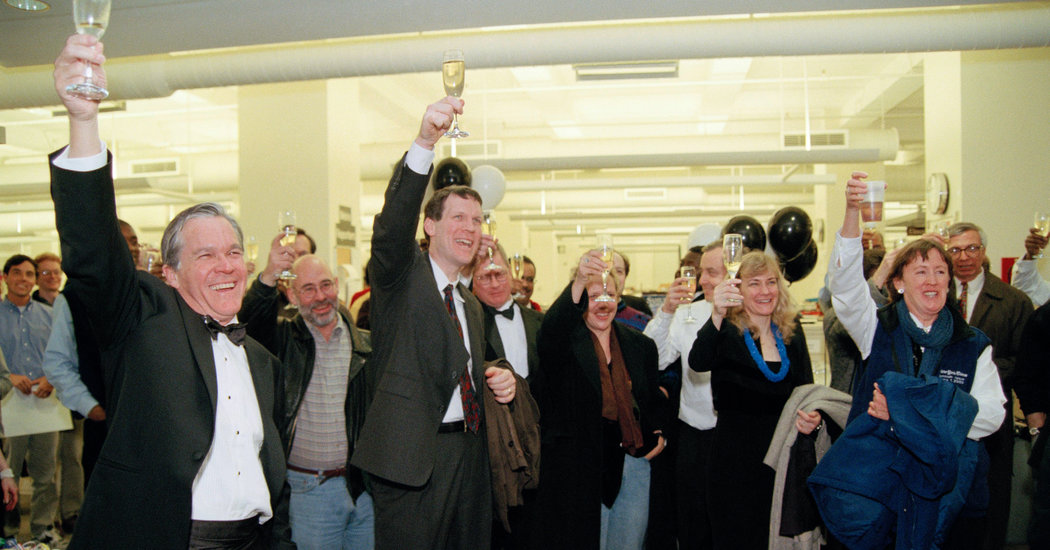Planes didn’t fall from the sky on Jan. 1, 2000. A technology reporter who wrote a front-page article early that morning reflects on a crisis that never was.
Times Insider explains who we are and what we do and delivers behind-the-scenes insights into how our journalism comes together.
“Despite a few sputters and glitches, the world’s computers appear to have survived the year 2000 rollover without major problems — and with humanity’s faith in technology intact, at least for another day.”
That was the lead of an article that ran on the front page of The New York Times on Jan. 1, 2000.
Yes, the year 2000 software problem, known as Y2K, turned out to be a nonevent. That has led to a widely held view that it was a kind of manufactured crisis, a vastly overstated danger inflated by a self-interested cabal of alarmists, journalists and technology companies. And today, Y2K is enjoying a sort of cultural moment for its place in 1990s nostalgia, even serving as the tongue-in-cheek story line in a new comedy-horror film, “Y2K.” (The lights go out and the electronic devices turn evil.)
When Zachary Loeb, who was 15 at the turn of the millennium, decided to study Y2K as the subject of his Ph.D. dissertation, he recalled that he had initially assumed he would be writing “a history of a techno-panic, hyped up by the media.”
But Mr. Loeb soon learned that it had been “a serious problem, and how seriously it was taken by serious people.” Now an assistant professor of history at Purdue University, Mr. Loeb is writing a book on the Y2K experience.
The Times took the year 2000 software problem seriously too. From 1998 through the first few days of 2000, the newspaper published nearly 140 stories about Y2K, based on a count of articles in The Times’s archives.
Beat reporters contributed articles that examined how the government, military, banking industry, airlines and other enterprises were preparing. There were articles on how Congress had formed committees and was holding hearings that included sworn testimony from legions of experts. President Clinton created the President’s Council on Year 2000 Conversion. The United Nations coordinated international efforts.
